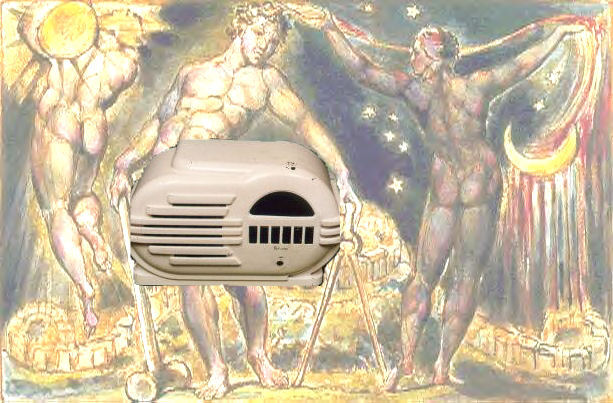Perceptual filling-in (radio) - necessary compensation
| Filling-in is the task of the listener - part of the ear-to-brain mechanism. See - Listening - how people listen |
| Filling-in is the compensation that the listener makes for what radio has filtered out in its representation of the extra-radio world. |
| Your brain hears things that your ears did not. In "Music Matters", David Elliott writes, 'we don't hear music as it is, we hear it as we are'. http://www.davidelliottmusic.com/musicmat/index.html |
| In the Lifeworld, and as audiences of fictional and documentary works (cinema, radio, print etc.), we constantly fill in extras - what is blurred, indistinct, and what objects are masked by others. For example, sound events mask other sound events. |
| FILM: For the film sound and visual tracks, we fill-in what is 'off ' (offscreen as opposed to onscreen). That is, out of the visual field or frame, and out of the sound track 'frame'. |
| VISUAL ART: We also fill-in for paintings, for what is outside the frame. |
| FOR ALL FICTION WORKS AND FOR THE LIFEWORLD: We use all of our five senses to do filling-in. This is an inescapable aspect of sensory experience. Perceptual filling-in is necessary compensation. |
| See Point-of-listening in radio plays - Beck, Alan, 1998, Sound Journal 6. Radio drama's frame & 7. Sound 'in' and 'out' |
| See SOUND CENTRE - FIXED SOUND CENTRE - the centre of the sound picture remains fixed in the same place + MOVING SOUND CENTRE - 'we go with' |
| See Point of listening = POL |
 |
| PERCEPTUAL FILLING-IN - consciousness studies, arguments mainly from visual illusions, as the blind spot in our eyes. |
| Thompson, Evan, Noë, Alva and Pessoa, Luiz, "Finding Out About Filling In: A Guide to Perceptual Completion for Visual Science and the Philosophy of Perception" at http://www.bbsonline.org/Preprints/OldArchive/bbs.pessoa.html |
| Kulvicki , John, "Any Way You Slice It: The Viewpoint Independence of Pictorial Content" at http://www.interdisciplines.org/artcognition/papers/9/1 |

|
Beck, Alan, 2000, 'Cognitive mapping and radio drama', Consciousness and the Arts and Literature, Volume 1 Number 2, July 2000 See Cognitive Mapping and Radio Drama by Alan Beck - monograph also at http://blackboard.lincoln.ac.uk/bbcswebdav/users/dmeyerdinkgrafe/archive/cog.html
I recognise the radio equivalent of invariants - elements perceptually invariant even under transformation. These crucially affect radio drama's limited vocabulary in the non-verbal domains and they are the means for generating expectations and my filling-in of missing information. Of course, when used creatively, invariants (in the play excerpt, the STORM SOUNDS and TOM-TOMS) offer the radio director many opportunities. This is just one particular approach to the relatively limited stock of radio drama's FXs (sound effects). Filling-in is the compensation that the listener makes for what radio has filtered out in its representation of the extra-radio world. |
|
|



